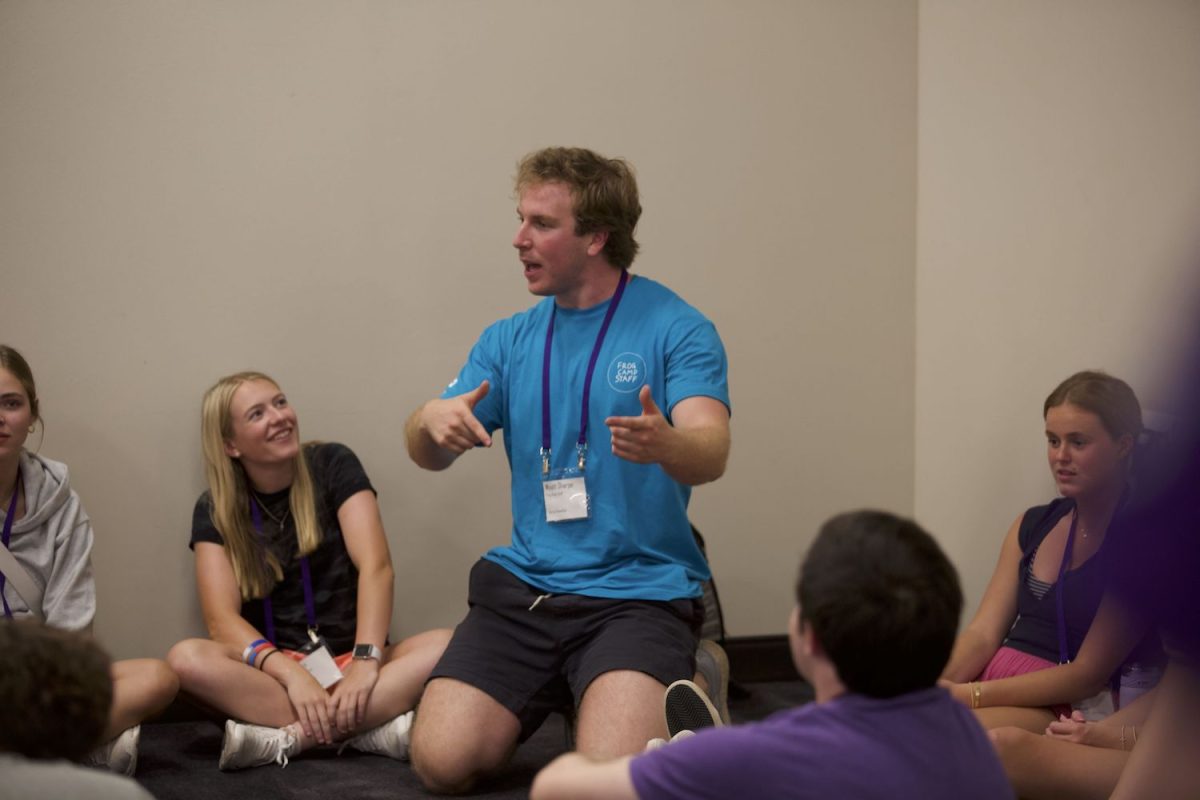Many people think of a Porsche as a sporty car with a low, loud growl that starts with the turn of a key.
That is not exactly the case with one of the TCU engineering department’s projects. Electrical engineering majors Steven Penninck and Ryan Savage have been converting a gas-powered 1974 Porsche 914 into an electric car.
The most visible part of the car is the arctic white paint on the body, Savage said. It was not always like that, though. It was a long process to take the Porsche from an Arlington backyard to the basement of the Tucker Technology Center.
Back in 2006, a high school student working with project adviser Stephen Weis first presented the proposal as a summer project. After a Physical Plant worker donated the engine from an electric Jeep Grand Cherokee, the only vehicles that would work were a Chevrolet S10 pickup truck or a Porsche 914. They found the Porsche body and the rebuilding process began.
However, the biggest change is not immediately seen.
Savage said there are batteries in the trunk and under the hood to make the car work. He said there are six Optima deep-cycle lead acid batteries in each area, which makes for 144 Volts. There is also an accessory battery, he said, that controls the windshield wipers and the “accessories” outside of the actual running of the car.
Also included in the car is the charger itself, so the car does not need a charging station. All it takes to charge the car is a normal three-prong plug, and plugging it into a normal wall outlet will charge the batteries one by one,Savage said.
Savage explained it in terms of a gas-powered vehicle.
“You could think of it as carrying around the gas station and basically all you need is a pipeline of sorts to connect to the grid, just like you would a microwave or a fridge,” he said.
Penninck said the car would take about a day to fully charge.
Seven other engineering students besides Savage, a junior, and Penninck, a senior, have specifically worked on the car on and off from 2006 to this year. Each student or pair of students added or did something to improve the car.
Fender flares over the wheels were an addition put on three and a half years ago. This is when James “Jim” Griffin, spray painter at the Physical Plant, first got involved. After Griffin proved he could do metal bonding, the engineering department asked him about painting the car.
The paint job is the most recent step in the renovation process.
The engineering department allowed two months for the painting to be finished, but Griffin completed it in 30 working days. He thinks the painting took less time because it is a small car, Griffin said.
But the painting process was not what he imagined, Griffin said.
“It was a little trying because some of the body aspects were in worse condition than I would have liked to have seen,” he said.
There were marks on the hood that looked like someone had walked across the hood of the car, Penninck said. These marks were all there when Griffin got the car, but he was able to fix them and get it smooth.
The students and faculty working on the project in the engineering department decided on painting the car white because it was sleek, Penninck said.
“We didn’t want to paint it some goofy color that nobody would really like,” Penninck said. "We could have painted it purple, but purple, we felt like, was too stereotypical. I know Dustin [Carroll] likes it to be real plain. I know Dr. Weis wanted it to be real plain. And I agree with them entirely.”
Not only is the white color simple, but Griffin also said the arctic white color would make a bright background for the decal.
The main decal would probably be purple and have “some sort of ‘Go TCU!’ paraphernalia,” Savage said.
“TCU colors are white and purple,” Savage said. “Regardless of what the football team says about black, it’s not a TCU color. So we think staying with white and purple really kind of embodies TCU as a whole.”
Now that the painting is done, the innards of the car must be put back.Everything was taken out in preparation for the painting, Savage said.
The next step for the car is to make it street legal.
Making it street legal includes getting the correct title. They will need a builder's title, Penninck said, because they have done so much and essentially rebuilt the car. The next step in making it street legal is to have it inspected once everything is in place and seems to be working correctly.
One advantage to having an electric car is not having to worry about a smog check because the car does not have any emissions, Penninck said.
The goal is to have the Porsche ready and legal to drive in the homecoming parade next year, he said.
Even after it is street legal, Penninck and Savage said it will continue to be a working lab for students.
“[Weis’s] idea is always to keep pushing, make it a rolling lab or sorts, not really like a show car or anything, so that students like Steven and I can come in and keep learning,” Savage said. “Kind of apply all the knowledge we’ve learned and really push forward in our education.”


